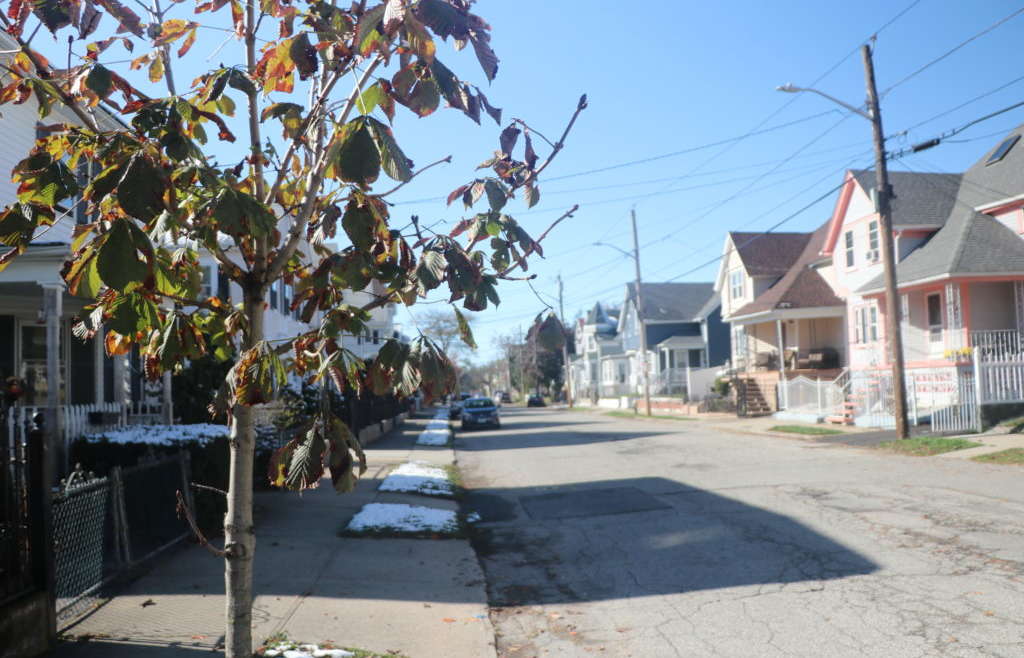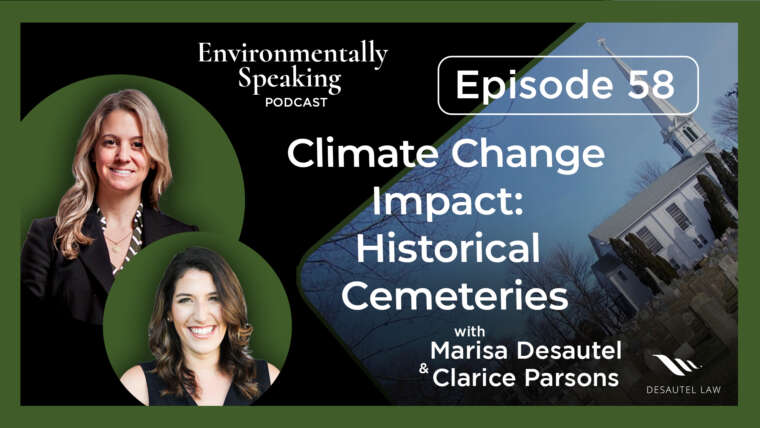PHOTO CAPTION: A neighborhood with a low Tree Equity Score in Providence, Rhode Island. Photo credit: Eben Dente / American Forests
American Forests unveiled its Tree Equity Score in November, aiming to help cities in the United States address a problem that exacerbates social inequities and climate change impacts nationwide—often far fewer trees in socioeconomically disadvantaged neighborhoods.
Governor Gina Raimondo has been a champion of urban forests and the concept of the Tree Equity Score. This support has caused Rhode Island, America’s smallest state, to become an outsized influencer in promoting the value of urban forests to address climate change, public health and employment issues.
A Tree Equity Score was created to indicate whether a neighborhood has Tree Equity, defined as the right number of trees, so all people experience the health, economic and other benefits that trees provide. Calculated neighborhood scores are based on such factors as existing tree cover, population density, income, employment, race, ethnicity, age, and urban heat island effect (as measured by surface temperatures).
City government employees, community activists, urban foresters, and others will be encouraged to use the scores to make a case for planting, protecting, and maintaining trees in the neighborhoods that need them the most, as well as securing the funding required to do so. The future of Tree Equity Scores aim to cover 486 U.S. Census-defined urbanized areas in the country, home to 70% of the U.S. population. The score includes cities and towns that have at least 50,000 people.
Today’s initial Tree Equity Scores cover multiple cities and towns in Maricopa County, Arizona (home to Phoenix), the San Francisco Bay area of California, and Rhode Island. These initial scores, found at www.TreeEquityScore.org, consistently show a need to plant, protect, and take care of more trees in socioeconomically disadvantaged neighborhoods.
The Rhode Island Tree Equity Score was launched with a new companion tool, the Tree Equity Score Analyzer, which will enable community leaders and other stakeholders across the state to parse their community’s score layer-by-layer and to see how it relates to specific parcels of land. The analyzer will help plan tree planting projects, scoping out different scenarios for the projects, and identify tree planting opportunities.
“Addressing Tree Equity gaps is an opportunity to improve people’s health and wellbeing, reduce energy costs and fight climate change,” said Sacha Spector, program director for the environment at the Doris Duke Charitable Foundation. “The new Tree Equity Score Analyzer tool puts communities in the driver’s seat by helping them target the gaps and create ground-up plans that put the right trees in the places that make sense for them.”
Addressing climate change-induced health problems, such as cardiovascular and lower respiratory tract illnesses, is a significant reason American Forests was driven initially to work with its partners to create Tree Equity Score. By trapping air pollutants, trees help keep the air clean, which reduces the risk of such illnesses.
Trees also help minimize the chance of heat-related illnesses and death. They help protect people from heat (which is more intense now due to climate change) by lowering temperatures and counteracting the urban heat island effect.
This is significant, given that a 10-fold increase in heat-related deaths is expected in the eastern U.S. by 2050. Trees can help reduce surrounding air temperatures by as much as 9° F. And because cool air settles near the ground, air temperatures directly under trees can be 20 to 45°F cooler than air temperatures in nearby unshaded areas.
Tree Equity also can help slow climate change itself. Urban forests across America already capture more than 120 million tons of carbon dioxide equivalent annually and reduce residential energy use for heating and cooling by an average of 7.2% nationally.
A new American Forests study, conducted with Dr. David Nowak of the U.S. Forest Service, suggests planting 25 million urban trees annually in the U.S. will enhance the climate mitigation benefits of urban trees by adding 353 million tons of additional carbon storage.
Per year, this will reduce carbon emissions from energy production by 10.3 million tons, saving $7.4 billion in building energy costs. To ensure such benefits are experienced by those who need them the most, Tree Equity Score could be used to help make a case for planting trees in neighborhoods where people struggle to pay their energy bills or experience higher rates of unemployment.
Call Desautel Law to talk with us about environmental laws and regulations. We are available by email at help@desautelesq.com and by phone at 401.477.0023.
* This blog is an adaptation of a press release distributed on Nov. 17, 2020. For more information on American Forests, visit www.americanforests.org. This article does not imply endorsement or any affiliation, it is simply informational in regards to climate change and environmental news.


